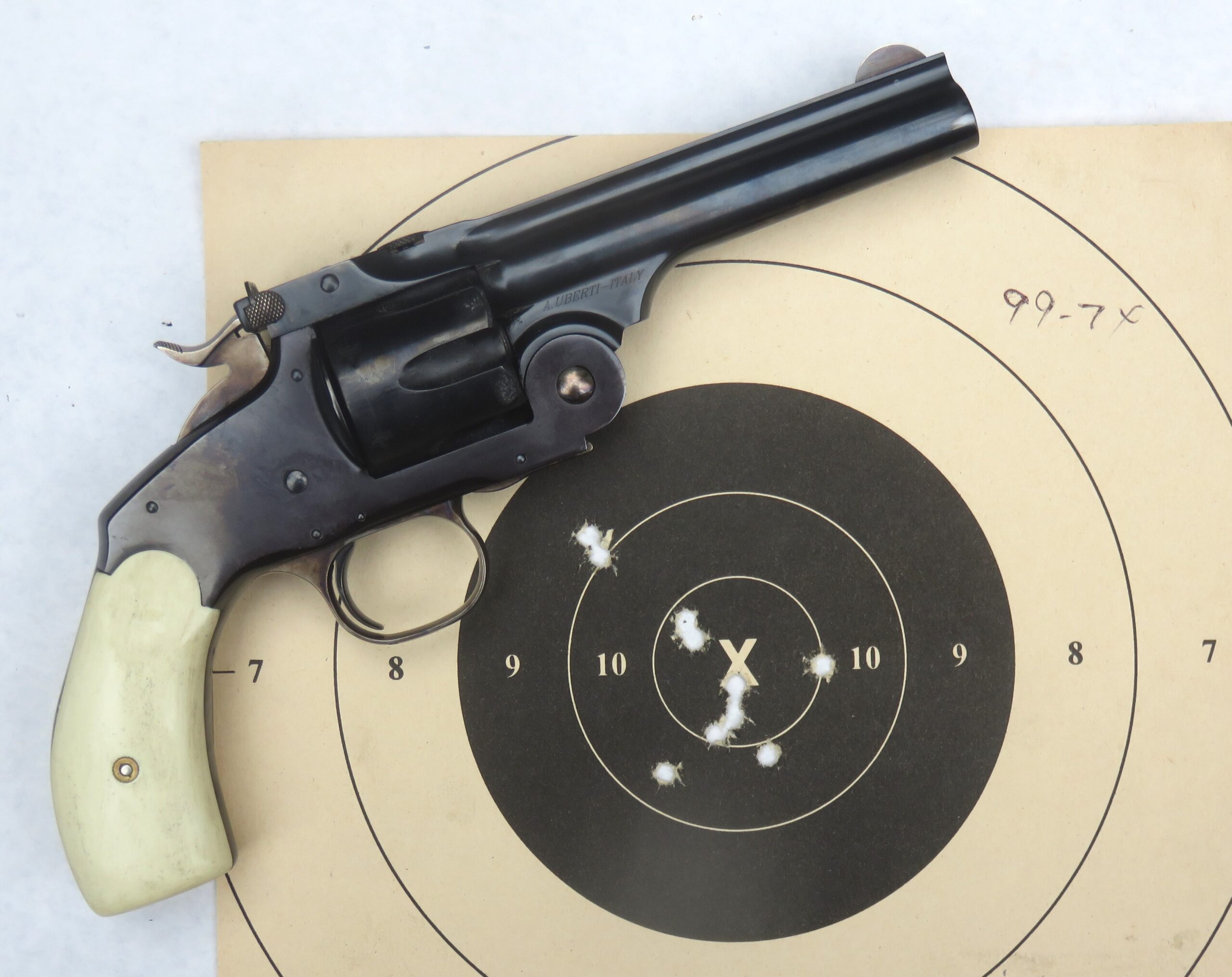
By Mike Nesbitt | Contributing Editor
In Part 1 of this discussion about reloading the .38 Special with black powder, we talked about loads for general revolvers in this caliber, including the fact that the .38 Special was originally a black powder cartridge.
Now we’re going to focus on the conversion revolvers, the .36 Navy percussion revolvers that have been given new cylinders to convert them to .38 Special caliber. The reason these are being treated as separate subjects or calibers is, basically, because that’s what they are. What makes shooting the conversions so different is their barrels with the .375-inch groove diameter instead of the .38’s normal .358-inch.
But before we do that, I want to fall back and add something to what I said and did in Part 1. That segment concluded with shooting 17½ grains of Olde Eynsford 2F powder under a 158- grain “Colt style” bullet, along with showing a target that was fired from the bench. Shortly after sending that story in to the editor, I tried the same bullet with 18 grains of the same powder. That loaded just fine, in fact there is room for more powder. And the shooting with the 18-grain loading is excellent. So, let me up date that conclusion now, my standard loading for my .38 Special is with the 158-grain bullets and 18 grains of the Olde Eynsford 2F.
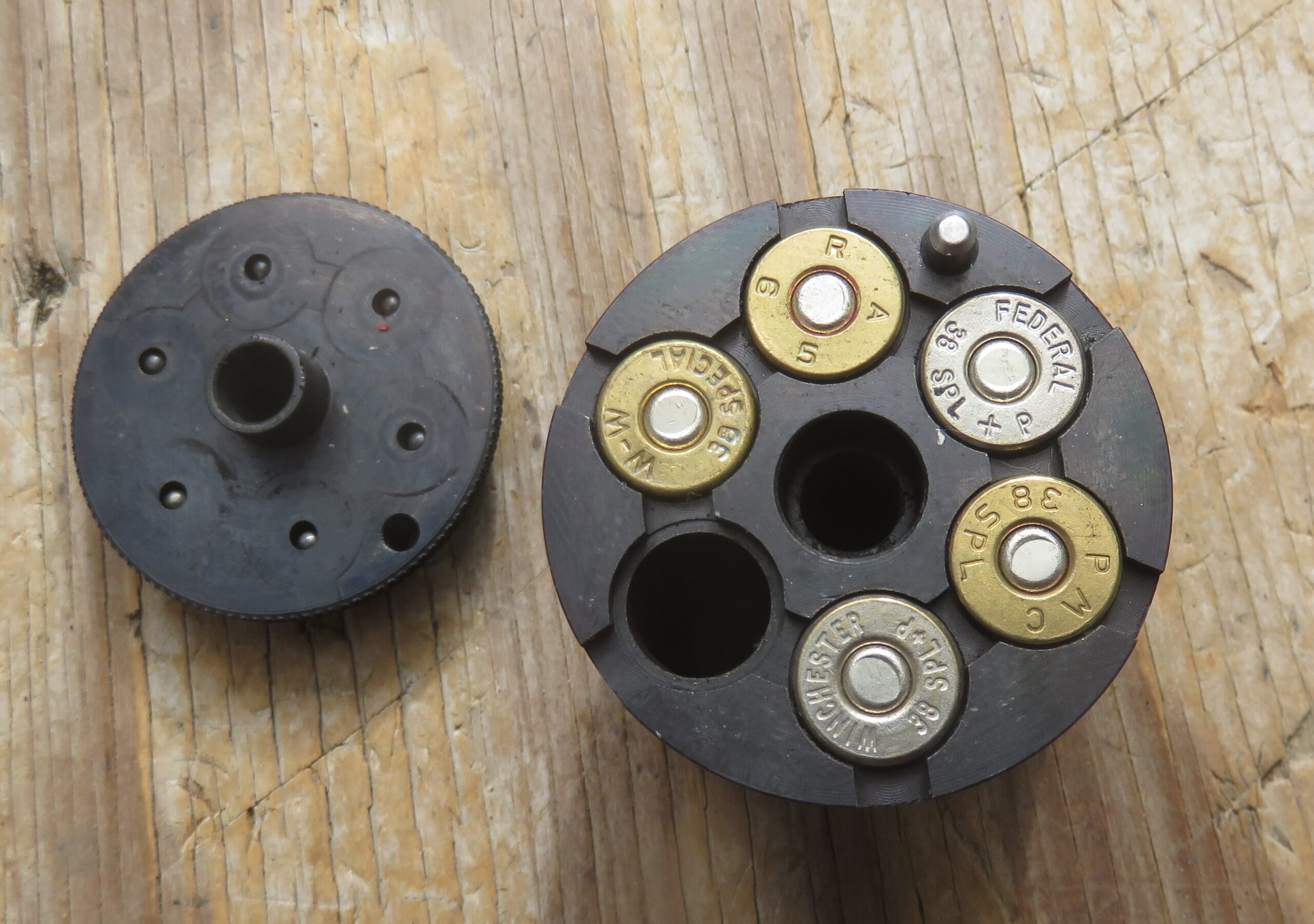
That 18-grain loading was put to the test recently at one of our Old West Centerfires Matches where black powder revolvers were used in an after-aggregate match. The after-aggregate matches are simply little add-ons which do not contribute to the aggregate scores. I used my “New Model No. 3” by Uberti and while shooting offhand, with a two-hand hold, with the target at 30 feet, I got a score of 99-7X. I’m proud of that even though it put me in 4th place. The winner was Allen Cunniff shooting a 7½-barreled Colt .45, getting a score of 100-8X.
Okay, now we can talk about the conversions.
+that I don’t have one. I do have a pair of .36 Colt Navy Models, 1851s, but mine will probably remain as cap and ball revolvers. I’m not against or opposed to making or shooting conversions and I did add a conversion cylinder to an 1849 Pocket Model in .31 caliber, converting it to a .32 S&W. That little .32 works just fine and, likewise, some of the conversions to .38 Special can also work fine.
We might say that adding a conversion cylinder to a .36 Navy is like going back in time. (It is actually moving ahead, but we’ll consider it as going back for now.) To give such a conversion a better chance of working well, we need to do something else which also has shades of going back in time. What is needed is a larger diameter bullet and the way to get one is to use a heeled bullet, where the bullet has the same diameter as the outside of the cartridge case. A very good and successful example of such bullets are seen on our .22 Short, Long, and Long Rifle series of cartridges. Using heeled bullets is how our first cartridges were loaded and such bullets in several calibers were referred to as “outside lubricated.”
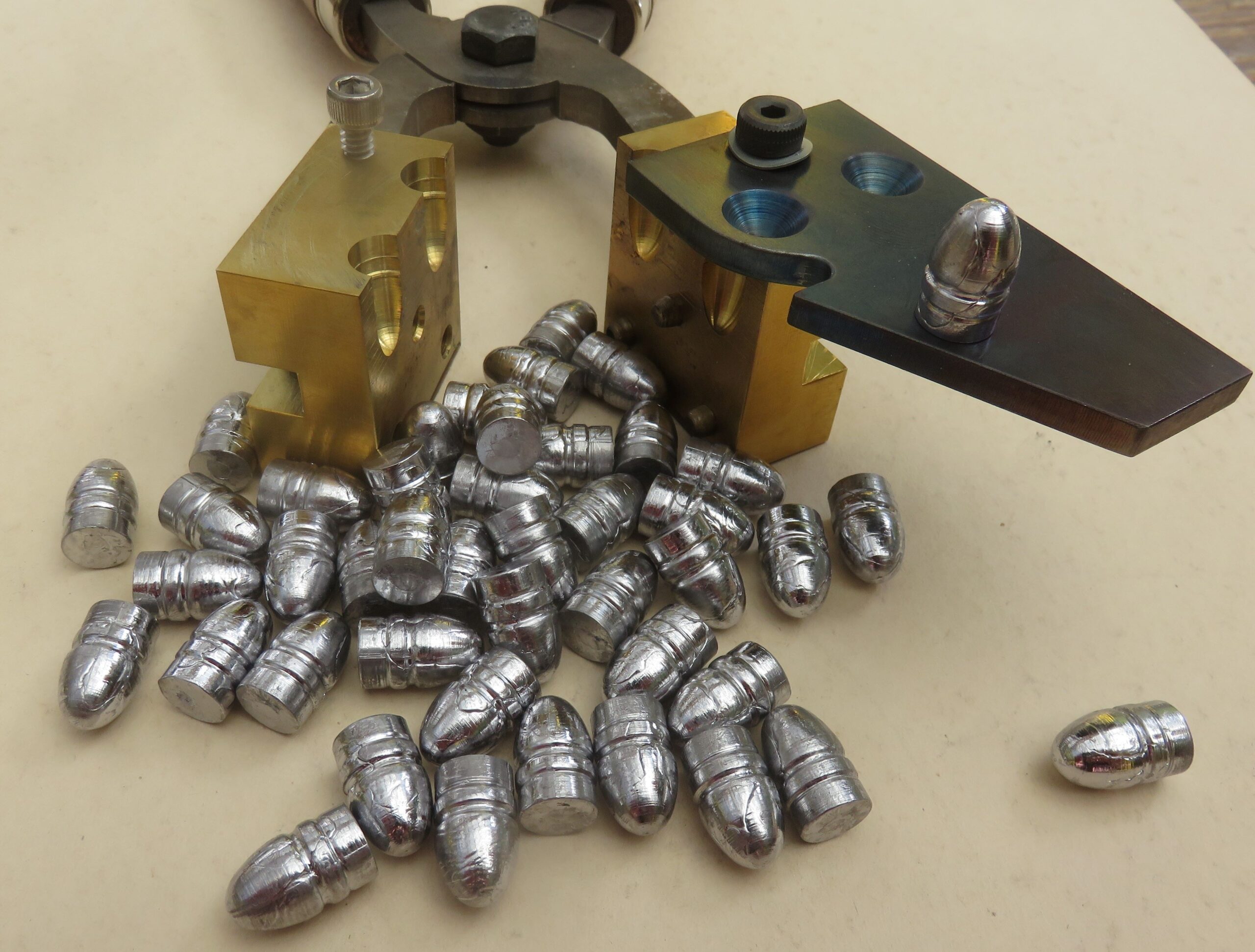
Old West Bullet Moulds (oldwestbulletmoulds.com) has just the mold for making the outside lubricated bullets for the .38 Special. Actually, those bullets are designed for the .38 Long Colt, such as for the Lightning Model, which had chambers which were bored straight through with no shoulder at the end of the cartridge case. Bullets for the .38 Long Colt weigh 150 grains and they have a .375-inch diameter with a .358-inch diameter heel. But those bullets will work just fine in the .36 Navy conversions when loaded in .38 Special cases. And Old West Bullet Moulds also offers a special crimping tool for crimping the heeled bullets into the cases.
I said those bullets will work fine in the .36 Navy conversion when loaded in .38 Special cases but maybe I spoke too soon. One factor that must be considered is the overall length of the loaded cartridge and with .38 Special cases, that might be too long for some conversions. Historically, the original conversions were for using the .38 Colt cartridges, both Short and Long. So, if you’re going to try this, make sure your conversion cylinder can accept the loads with the .38 Special cases. If the .38 Specials are too long, just find some .38 Colt cases, they’ll work.
Old West Bullet Moulds also makes a mold for 125-grain .375 heeled to .358 bullets. Those are intended for the old .38 Short Colt but they might be the real ‘cat’s meow’ for Cowboy Action shooting with a conversion revolver. On top of that, we can’t ignore the idea that those bullets should work just fine if someone wanted to reload cartridges for the old .38 Short Colt.
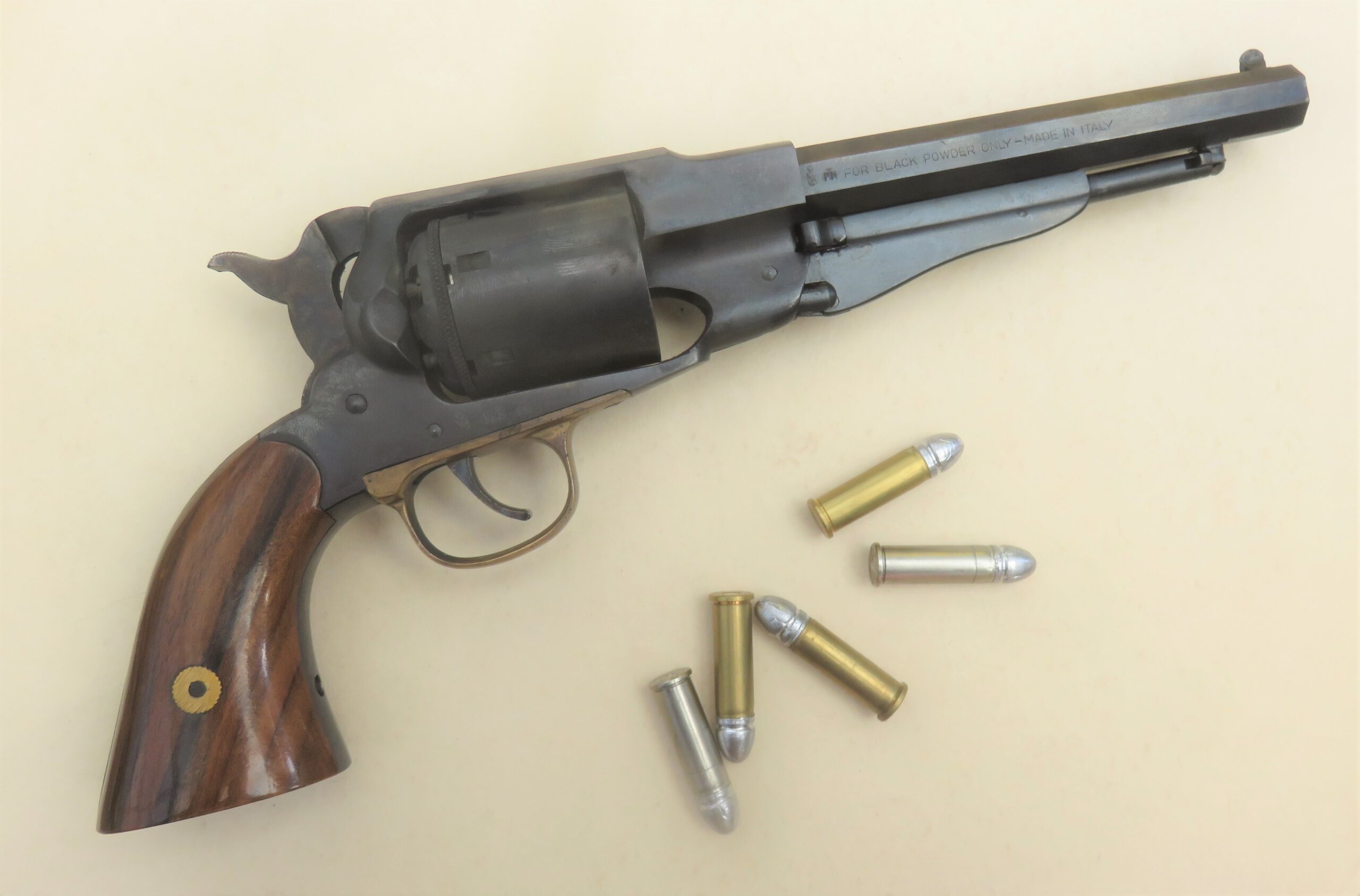
Tom Witt, a friend and fellow member of the Black River Buffalo Runners, uses a copy of a Remington .36 with a conversion cylinder and the heeled bullets in .38 Special cases. His usual loading includes 16 grains of GOEX 2Fg powder, a lubricated wad, then the bullet. We did some shooting together and he was doing rather well while using the .375-inch heeled bullets.
The Remington style .36 caliber revolvers, I believe, have longer cylinders than the Colt Navy Model, and I’m sure they have a longer cylinder than the smaller Pocket Navy 5-shooters. If you’re shopping for a conversion cylinder, I recommend you visit the web site of Buffalo Arms (buffaloarms.com) and look at either the Howell or the Kirst cylinders. And note which of the .38 caliber cylinders are made for .375-inch diameter bullets.
We can expect little or no chance of shooting one of the loads with a .375 diameter bullet loaded in a .38 Special case in a standard .38 Special revolver. With the larger bullets, the loads simply won’t completely enter the gun’s chamber. The shoulder inside the chamber, generally at the end of the cartridge case, will block the larger bullet’s entry.
There is another way to make reloads for using .38 Specials in the .375 barrels of a Navy revolver and that is to use hollow based bullets. A good way to try this is to buy some 148-grain hollow-base wadcutters, those should at least do well enough so you can see if you’d want to buy a mold or not. And if you do want a hollow-base mold, Old West Bullet Moulds offers a 150- grain round nose which is, again, designed for the .38 Long Colt.
One advantage in using the hollow-based bullets is that the ammunition can be used in either the revolvers with the .358 barrels or the .375 barrels, that ammunition would be interchangeable between the standard revolvers and the conversions. When used in the conversions, the bullets should be cast with rather soft lead to give them every chance to expand to fill the barrels grooves.
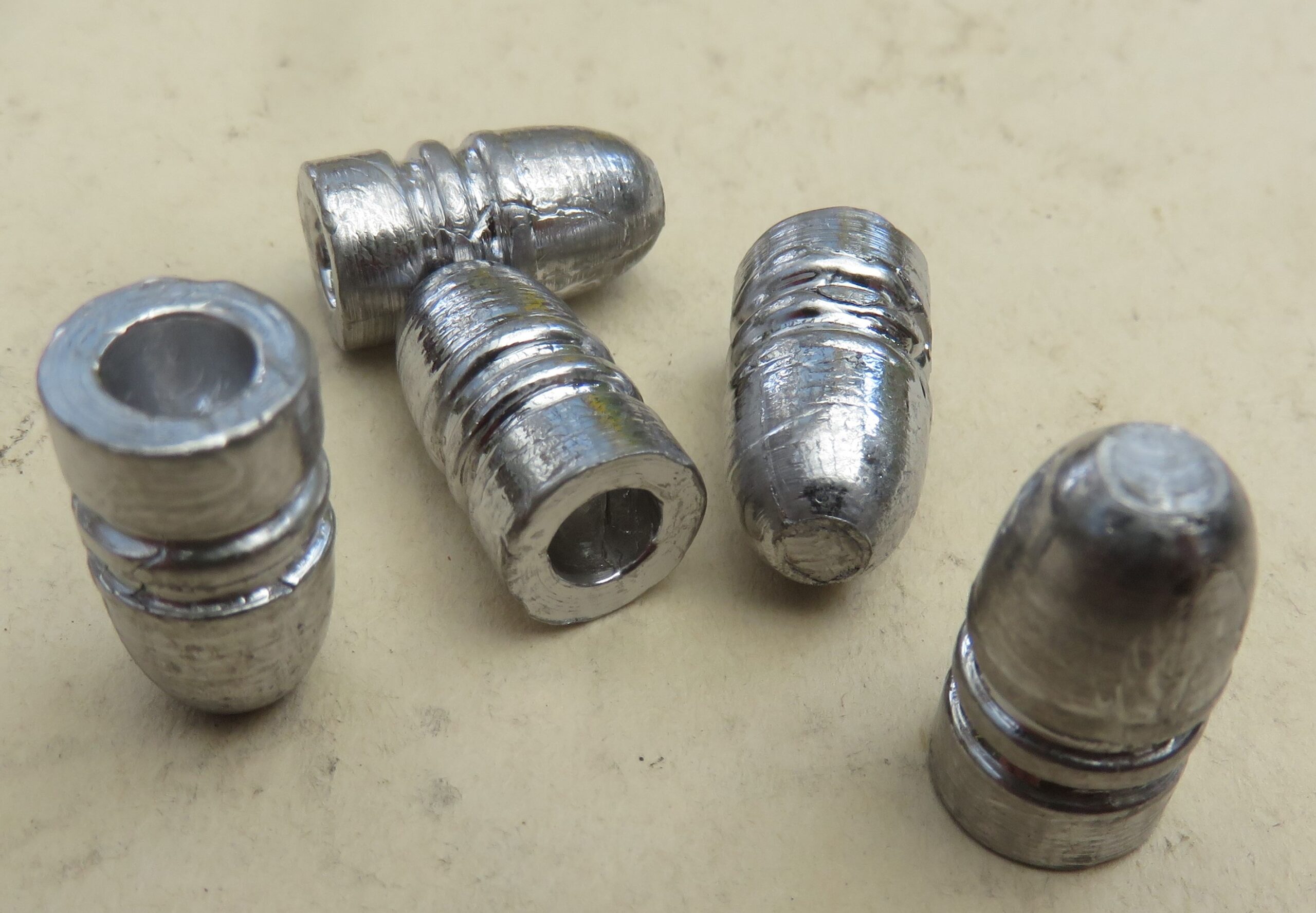
Tom has both bullet molds, and he prefers the heeled bullets over the hollow-based. In his experience, the hollow-based bullets are much more prone to keyhole and are otherwise not generally as accurate. To put things simply, Tom has much more confidence in the heeled bullets while doing his shooting with the Remington Navy revolver.
We talked about technicalities while doing some shooting recently. Tom admitted that his revolver gets ‘fouled up’ when shooting black powder loads, which simply makes the cylinder a bit hard to turn after a given number of shots. When he said that, I asked him why he didn’t add some lube to the outside lube groove on the bullets. He told me that he figured the lubed wad inside the case would do the job and it is much easier to keep his ammo clean without having the greasy lube on the outside of the bullets. We have to agree with his thinking about keeping the bullets clean. At the same time, I suggested that the lubed wad inside the case wasn’t doing the job and he should add lube to the bullet’s lube groove, perhaps just before chambering the cartridges. Tom said that idea was worth a good try and I do believe he’ll notice a good difference in the performance of his revolver. With black powder shooting we often say that too much lube is just about right.
On the day we did our shooting for this story, Tom was using his Remington .36 and doing rather well. He was shooting with the 150-grain .375-inch heeled bullets seated over the lubed wad and 16 grains of GOEX 2Fg powder. I took the picture of him after he put five shots into the black on the target, posted at 30 feet. He was shooting offhand and was preparing to use his .36 with the .38 Special loads in the match which was less than a week away.
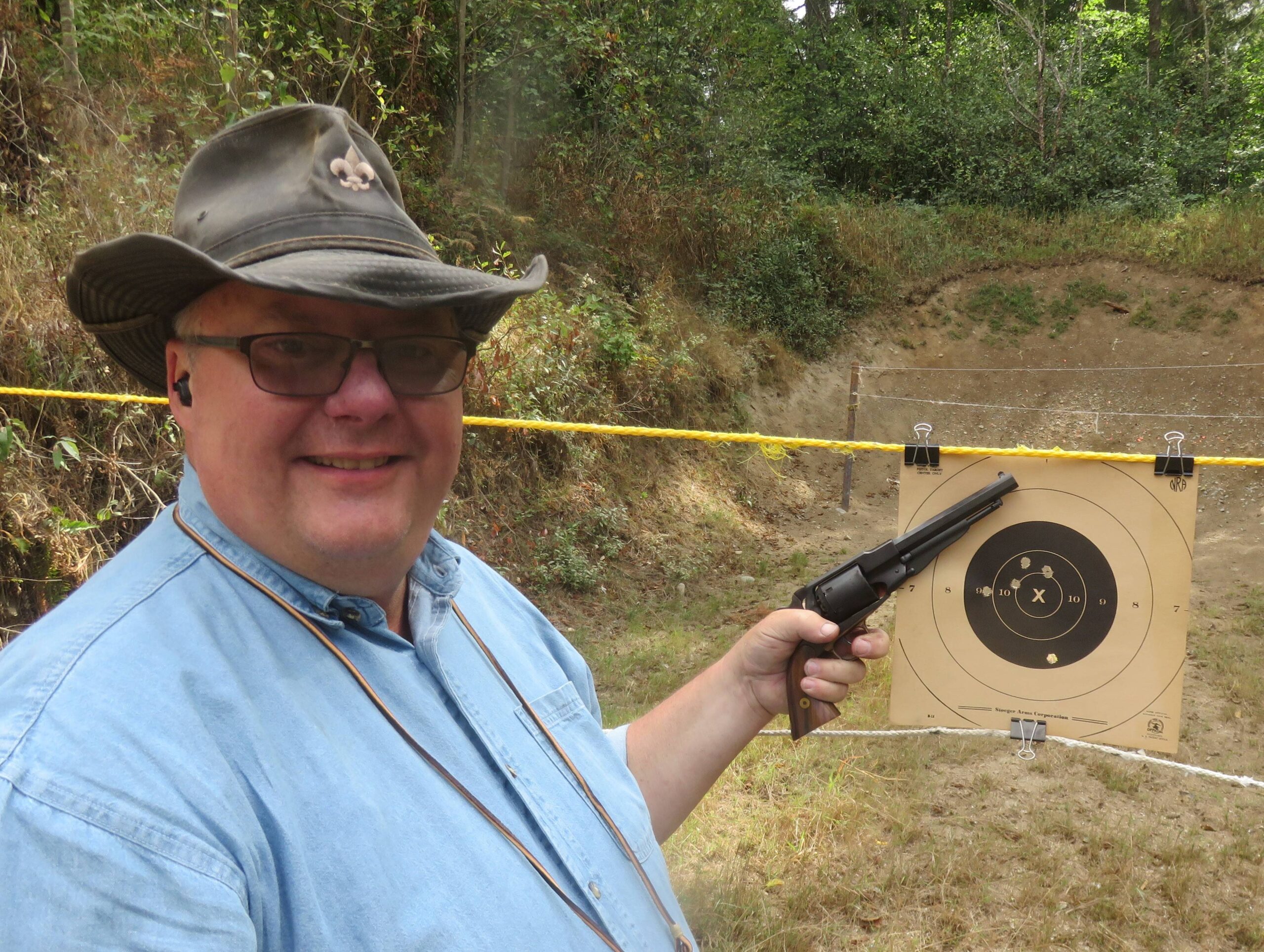
That was the same match I mentioned at the beginning of this tale. In fact, we shot side by side and I got to watch him doing some pretty good shooting. He had to remove the cylinder from the gun in order to reload it but then finished his ten shots without any noticeable delay. And his score wasn’t bad at all, Tom shot a 91 in that match, finishing in the top ten.
To conclude let me say that the good old .38 Special is a dandy of a black powder cartridge. We might say it’s a natural for such doin’s. On top of that, it is certainly a lot of fun to shoot with black powder loads.



